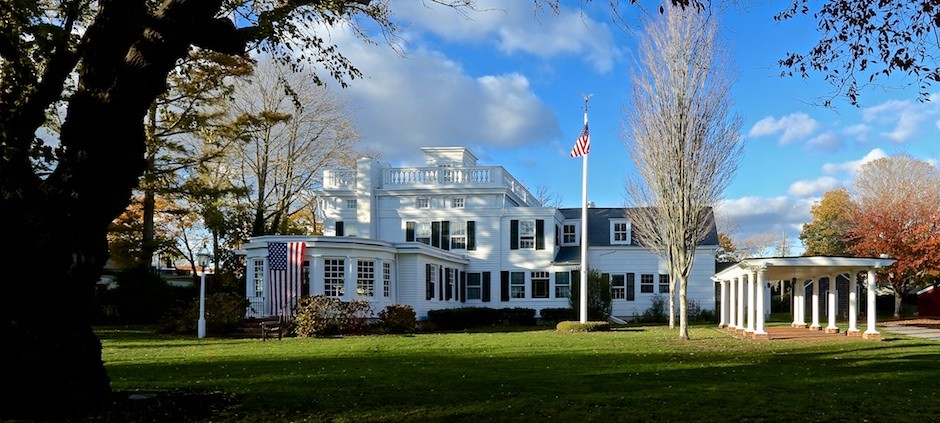
IF THESE WALLS COULD TALK:
The Families of the Rogers Mansion
Rogers, Nugent & Parrish
~~~~~~~~~~~~~~~~~~~~~~~~~~~~~~~~~~~
EXHIBIT CLOSED, 2015
————————————–
Samuel Longstreth Parrish
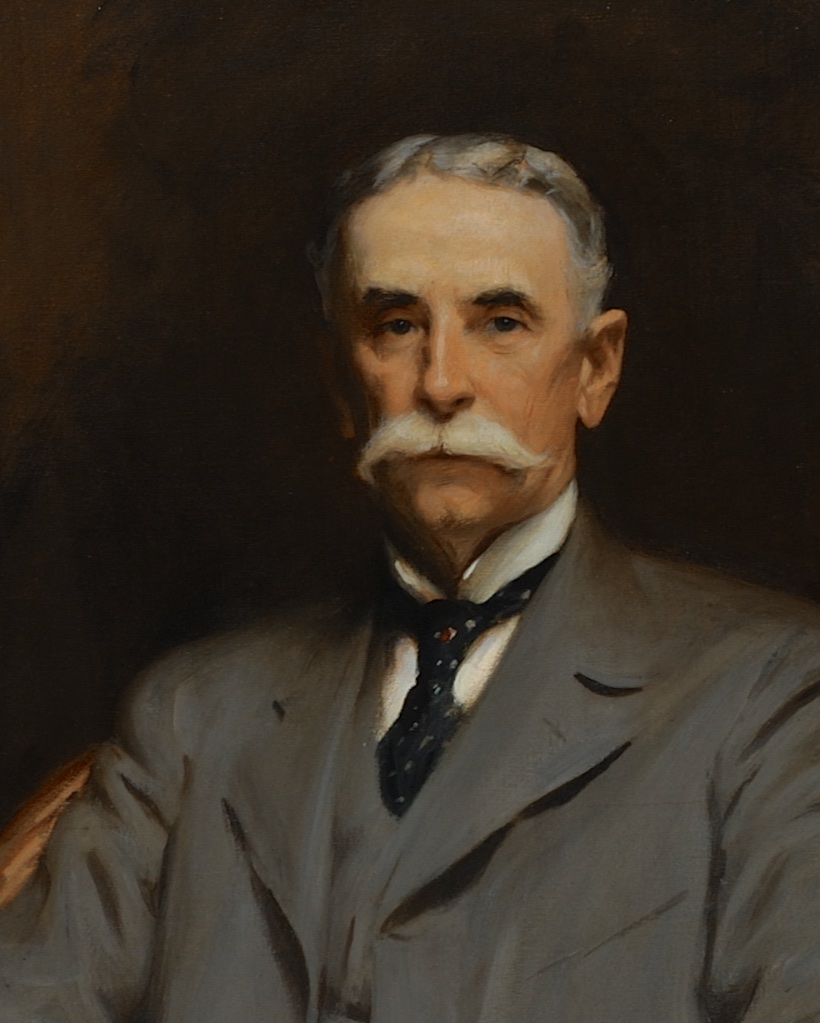
Samuel Longstreth Parrish Lived in the Rogers Mansion From 1899 – 1932
Samuel Longstreth Parrish was born in 1849 into a family of prominent Philadelphia Quakers, the youngest of seven children. After the death of his father when Samuel was just three, the family went to live on his uncle’s New Jersey farm where Samuel developed a taste for country life that would eventually bring him to Southampton. After earning a degree from Harvard and studying law, Parrish opened a law practice in New York in 1877.
Though he did not retire until 1897, Parrish became enamored of Southampton in the 1880s when he began acquiring real estate and taking a role in civic affairs. By that time, Southampton was established as a fashionable summer resort and Parrish was far from the only New Yorker spending summers in the village, which had become easily accessible after the arrival of the railroad in 1870. In 1889, Samuel asked Stanford White to design a house for his mother on First Neck Lane. And when, in 1897, he conceived the idea for an art museum, he chose architect Grosvenor Atterbury, a member of Southampton summer society, to design the building on Jobs Lane which he filled with original art works and reproductions acquired in Europe.
In 1899, Parrish purchased the Rogers Mansion from the Nugent family and immediately began to make improvements and additions. He enlarged the mansion’s South Parlor and created a music room, a billiard room, a butler’s pantry, and a servant’s wing. By 1926, he decided to move the house back from its Main Street location and add a pergola and lush gardens, at this point he had nearly doubled the size of the mansion. He again hired Atterbury to design commercial buildings for the vacated property fronting on Main Street. The handsome brick buildings survive, along with so many other reminders of his generosity toward his adopted village. In addition to the museum that bears his name, the Shinnecock Golf Club owes its existence to him and a small group of his friends who brought golf to Southampton; the Parrish Memorial Hall was a gift from him and his brother James; the Rogers Memorial Library and Southampton Hospital were both established with his help; and he played a pivotal role in establishing the nations’ first outdoor art school in Shinnecock Hills. (See images at end of album.)
Civic-minded, as befitted a man of his times, social station and Quaker upbringing, Parrish was active in Republican politics and served a term as Southampton’s president (mayor). Parrish loved to entertain and during his residency, the Rogers Mansion was a vibrant center of activity, whether he was hosting a lively political discussion in the south parlor, an elegant dinner in the dining room or a summer repast under the pergola.
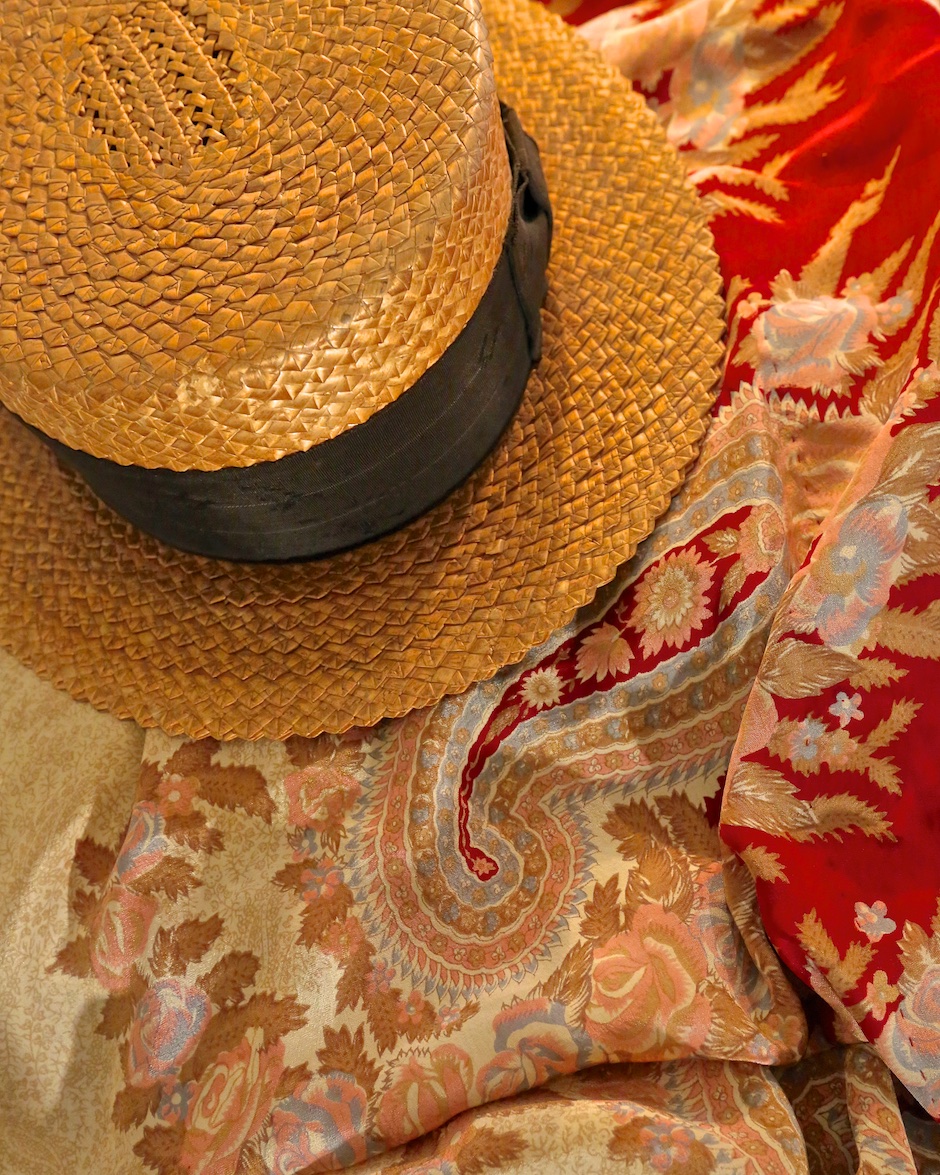




————————————————-

Tri-Fold Parlor Stereographoscope
Stereographoscopes were created to view Stereograms. Stereograms are created when two separate images are printed side-by-side, but when viewed through a Stereographoscope, it creates the illusion of three-dimensional depth from a two-dimensional image. From the Collection of the Southampton Historical Museum.
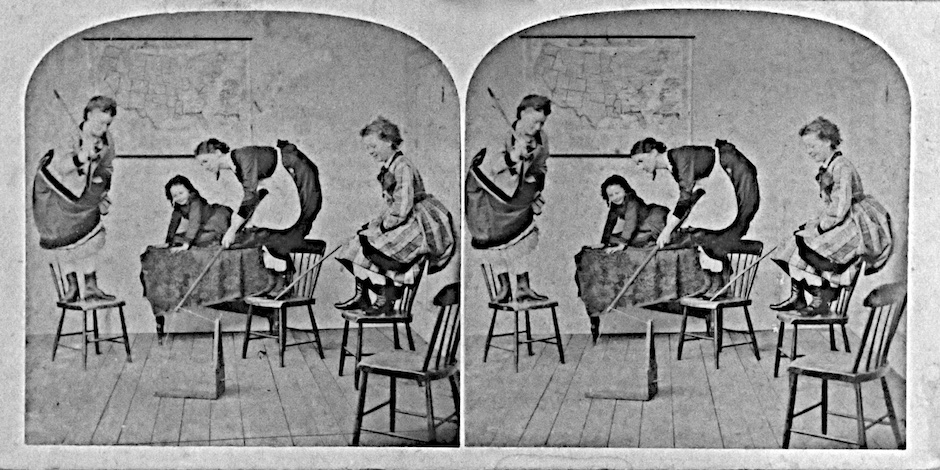
————————————————-
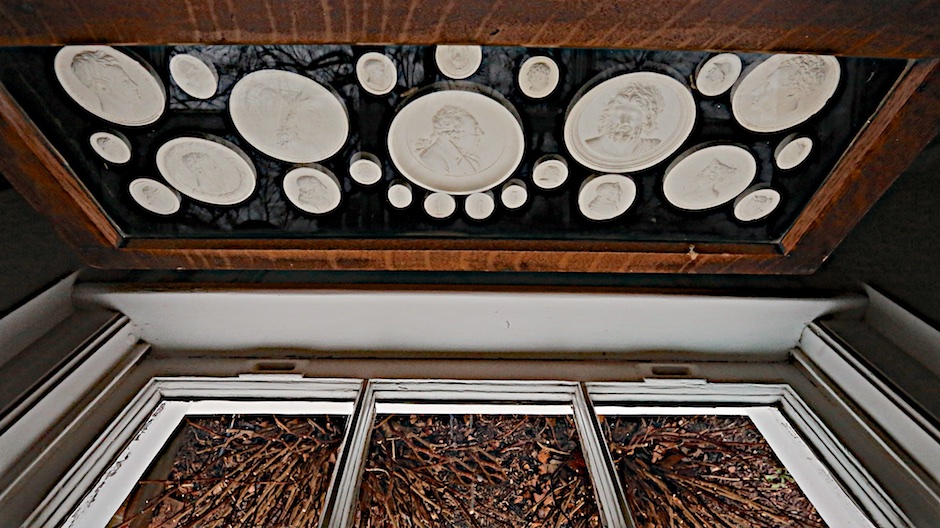
Medallion Cabinet, 1900. Samuel L. Parrish Collection

Samuel Parrish collected these plaster copies of Roman and French medals in the late 19th and early 20th centuries while he traveled abroad in Europe.
The art of the medal is a relatively modern trend beginning in the Italian Renaissance where popular admiration for classical cultures teemed over into commemorative medal making.
Parrish’s collection celebrates early Roman emperors and French rulers from the 13th to 17th centures. The original Roman medals may date from the 15th century where medal making began in Italy, but the original French medals were most likely created in the 16th or 17th centuries.
Medal collecting is related to coin collecting which began to grow in popularity in the late 19th centure. It was (and is) common practice to create plaster copies of historic coins and more contemporary medals for collectors.
The case and its contens are original to the Rogers Mansion, from the period when it was owned by Samuel Parrish (1890-1932).
————————————————-

Brass Chandelier, c. 1880
The light fixture in the middle of the ceiling was originally made for gas. Images of phoenix were a popular decorative element during the Aestethetic Movement which heavily influenced its design. Electricity came to Southampton in 1903. Donated by Diane Pinkston in memory of her husband Dean who restored this chandelier and many other lamps at the Rogers Mansion.
————————————————-
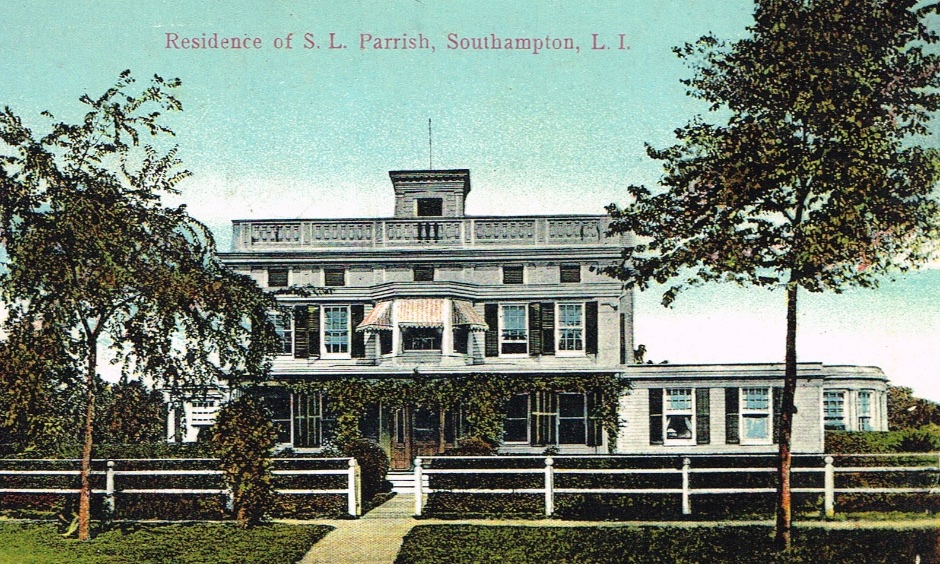
Rogers Mansion prior to its move back away from Main Street in 1927, in order to make room for commercial buildings.
~~~~~~~~~~~~~~~~~~~~~~~~~~~~~~~~~~~~~~~~~~~~~~

ROGERS MANSION TIMELINE
ROGERS FAMILY
1621 – Thomas Rogers leaves England and ventures forth to America on the Mayflower bringing along his three sons William, Joseph and John.
1645 – William Rogers is allotted three acres on Main Street where the Rogers Mansion stands today. William is the 1st generation to live on the Rogers Property. He and his wife Ann Hall Rogers, whom he married in 1642, raise their 6 children there.
1655 – William Rogers gives the Rogers Southampton property to his oldest son, Obadiah Rogers
(2nd generation). He marries Mary Russell and has 7 children.
1686 – Obadiah Rogers (3rdgeneration) marries Sarah Howell. After her death he marries Mary Clark and they have 6 children together.
1720 – Captain Obadiah Rogers (4th generation) marries Abigail Herrick. They have 8 children together, the youngest a boy Zephaniah.
1742 – Captain Zephaniah Rogers (5th generation) marries Elizabeth Sayre and they have 7 children together. The oldest boy is named Herrick. Captain Zephaniah Rogers is not only a whaling captain but also a soldier in the Revolutionary War. Zephaniah Rogers and William Herrick partner as merchants and open Rogers & Herrick.
1778 – Captain Herrick Rogers (6th generation) at the age of 21 marries Hannah Rose and they have 3 children. After Hannah’s death in 1803, he marries Phebe Sayre in 1805 and they have 3 children together. The
oldest boy is named Albert. Captain Herrick Rogers becomes a very successful merchant by continuing his father’s business.
1827 –Whaling Captain Albert Rogers (7th generation) inherits the Rogers home at the age of 20. Albert first
marries Mary Halsey whose death 5 years later leaves him a widower with no children. His second
marriage is to Mary’s older sister Cordelia and they have 3 children.
1843 – Captain Albert Rogers builds onto the original Rogers home and creates the Greek Revival Mansion that stands here today, though at that time it was located much closer to Main St.
1854 – Captain Jetur Rogers becomes the 8th and final generation of the Rogers family to inherit the Rogers
Southampton property. He marries Harriet Pierson and they have 3 children.
1881 – Dr. John Nugent opens an office in Southampton for the general practice of medicine, his lifelong
profession. He is the first in a line of prominent local physicians in Southampton. In 1886 he marries
Helen H. Fordham and they have 3 sons.
————–
DR. JOHN NUGENT
1889 – Dr. John Nugent buys the Rogers Mansion from the Rogers estate and becomes the first non-Rogers to live on and own this property. He moves his wife and one-year- old son John Jr. into the house and his younger sons, William and Paul, are both born in the house.
1890 – Dr. John Nugent builds the carriage house on the Rogers Mansion property.
————–
SAMUEL PARRISH
1899 –Samuel Parrish purchases the Rogers Mansion as a summer home from the Nugent family after they have lived there for 10 years. Samuel is a retired lawyer from NYC. In 1897 he built the Parrish Art Museum on Jobs Lane.
1927 – After substantially enlarging the Rogers Mansion, Parrish moves it back from Main Street and commissions Grosvenor Atterbury to design the commercial buildings in its place.
1928 – In 1928, at the age of 79, Parrish is married for the first time. His bride is Clara Bloxsom, a British-born widow.
1932 – Parrish dies at his New York residence at the age of 82 after being struck by a car.
1943 – The Trustees of Southampton Village buy the property from the Rogers estate and use it as a community center. The YMCA and the Red Cross occupy space in the Mansion.
1952 — The house becomes The Southampton Historical Museum.
~~~~~~~~~~~~~~~~~~~~~~~~~
IF THESE WALLS COULD TALK: THE FAMILIES OF THE ROGERS MANSION
Exhibit at the Rogers Mansion — thru December 31, 2015
~~~~~~~~~~~~~~~~~~~~~~~~~~~~~~~~~~~~~~~
— Exhibit Closed in 2015 —
~~~~~~~~~~~~~~~~~~~~~~~~~~
Southampton Historical Museum
Emma Ballou, Curator & Registrar at the Southampton Historical Museum
Copy, Archival Photographs, Postcards & Illustration courtesy of the Southampton Historical Museum.
Visit: www.southamptonhistoricalmuseum.org
————————————-
Visit these related Art & Architecture Quarterly / East End Portfolios:
Southampton Village Walking Tour
Rogers Mansion Museum Complex, Southampton
Rogers Mansion, Southampton, 1750 to 1926
—————-
Photo Essay — Parrish Family / Copyright Jeff Heatley, 2016.
——————– ADDENDUM ——————–
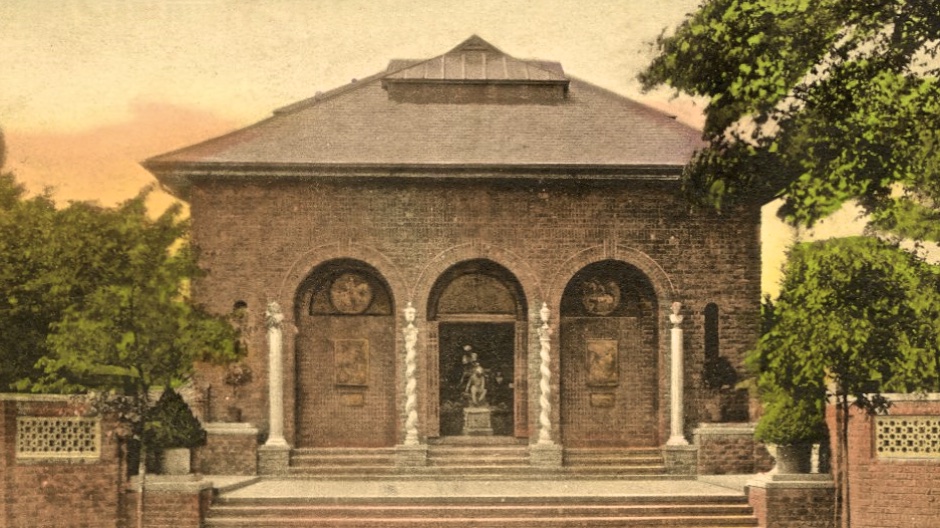
Parrish Art Museum, 1898
And when, in 1897, he conceived the idea for an art museum, he chose architect Grosvenor Atterbury, a member of Southampton summer society, to design the building on Jobs Lane which he filled with original art works and reproductions acquired in Europe.

Samuel Longstreth Parrish standing inside his art museum.
In 1899, Parrish purchased the Rogers Mansion from the Nugent family and immediately began to make improvements and additions. He enlarged the mansion’s South Parlor and created a music room, a billiard room, a butler’s pantry, and a servant’s wing. By 1926, he decided to move the house back from its Main Street location and add a pergola and lush gardens, at this point he had nearly doubled the size of the mansion.

 Rogers Mansion as seen through Arcade.
Rogers Mansion as seen through Arcade.
He again hired Atterbury to design commercial buildings for the vacated property fronting on Main Street. The handsome brick buildings survive, along with so many other reminders of his generosity toward his adopted village.
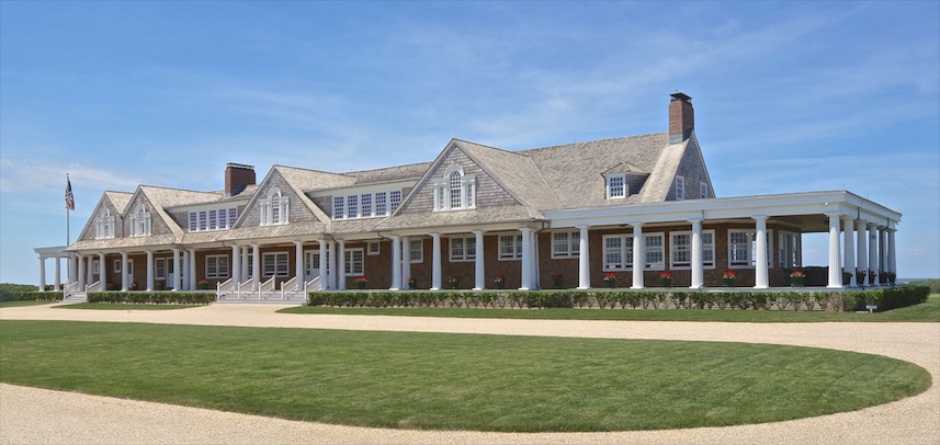
In addition to the museum that bears his name, the Shinnecock Golf Club owes its existence to him and a small group of his friends who brought golf to Southampton….
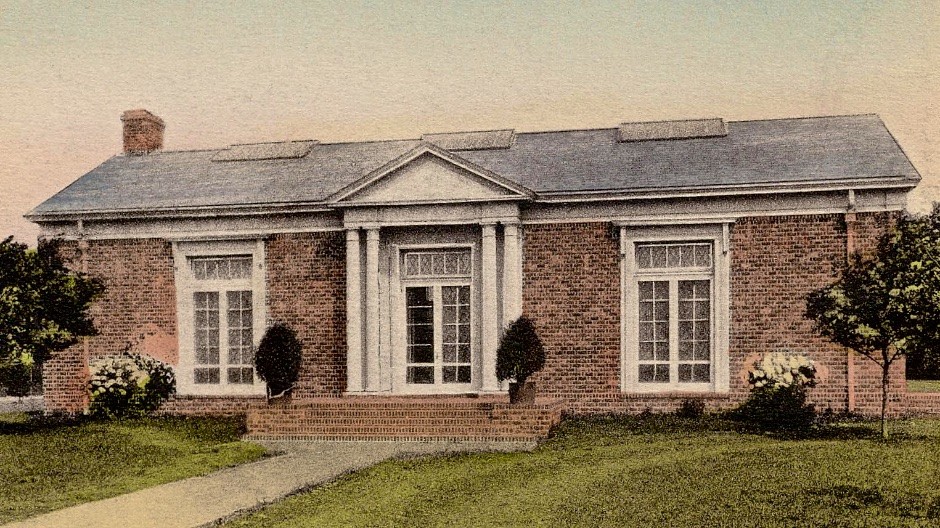
the Parrish Memorial Hall was a gift from him and his brother James….
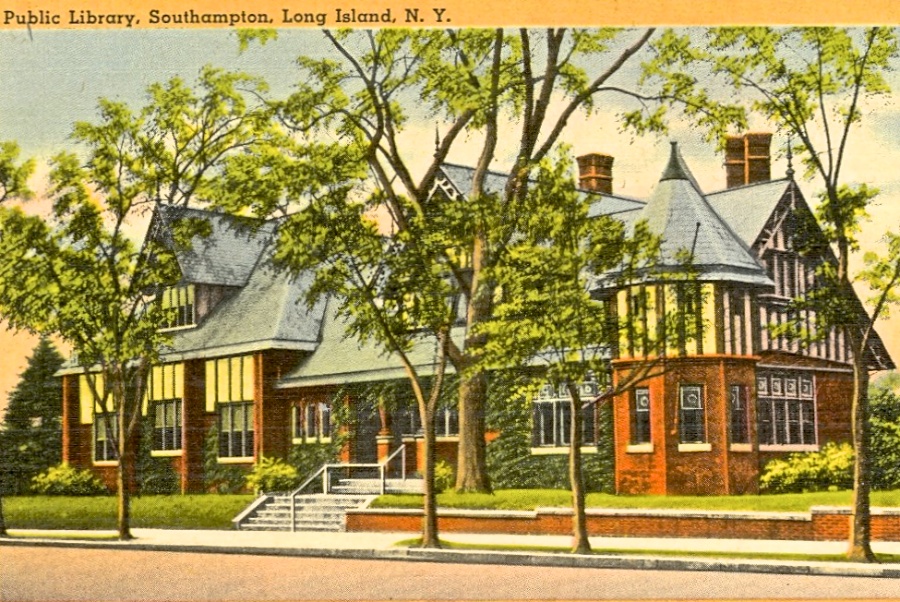
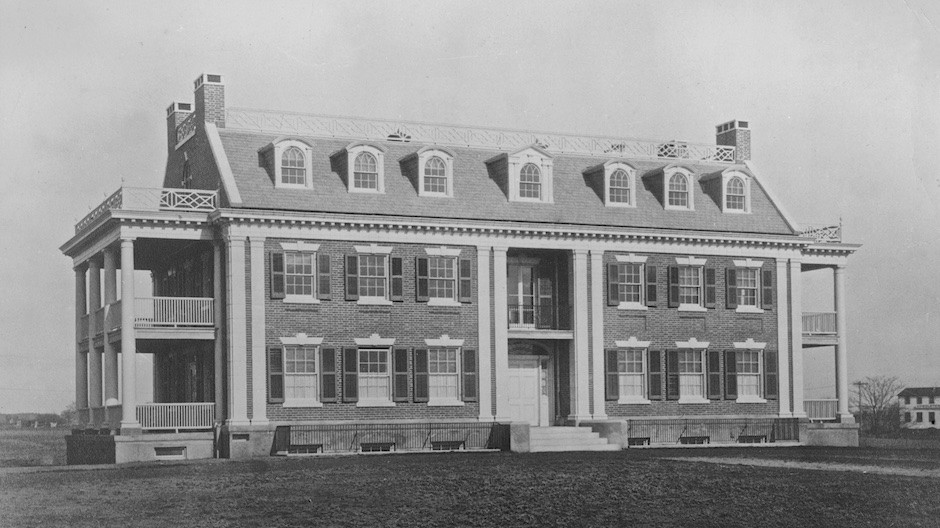
the Rogers Memorial Library and Southampton Hospital were both established with his help….
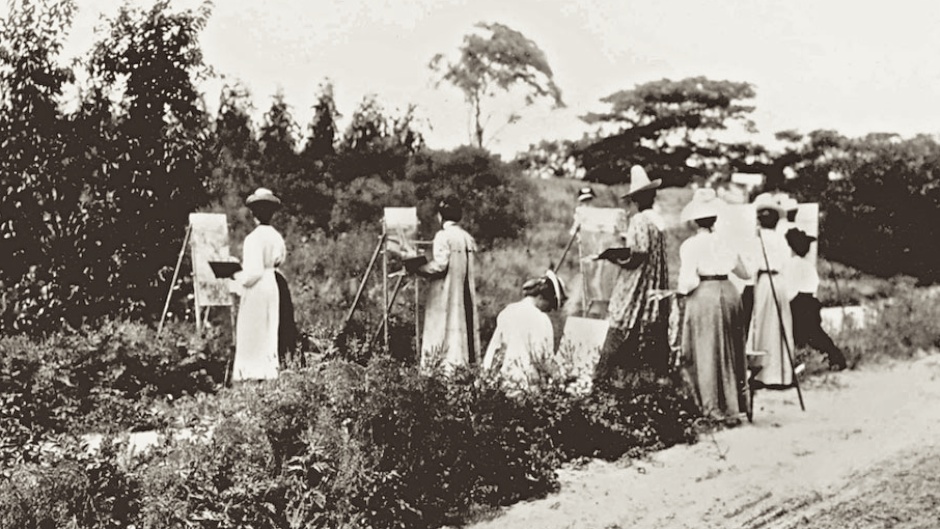
and he played a pivotal role in establishing the nations’ first outdoor art school in Shinnecock Hills.
___________________________________________
